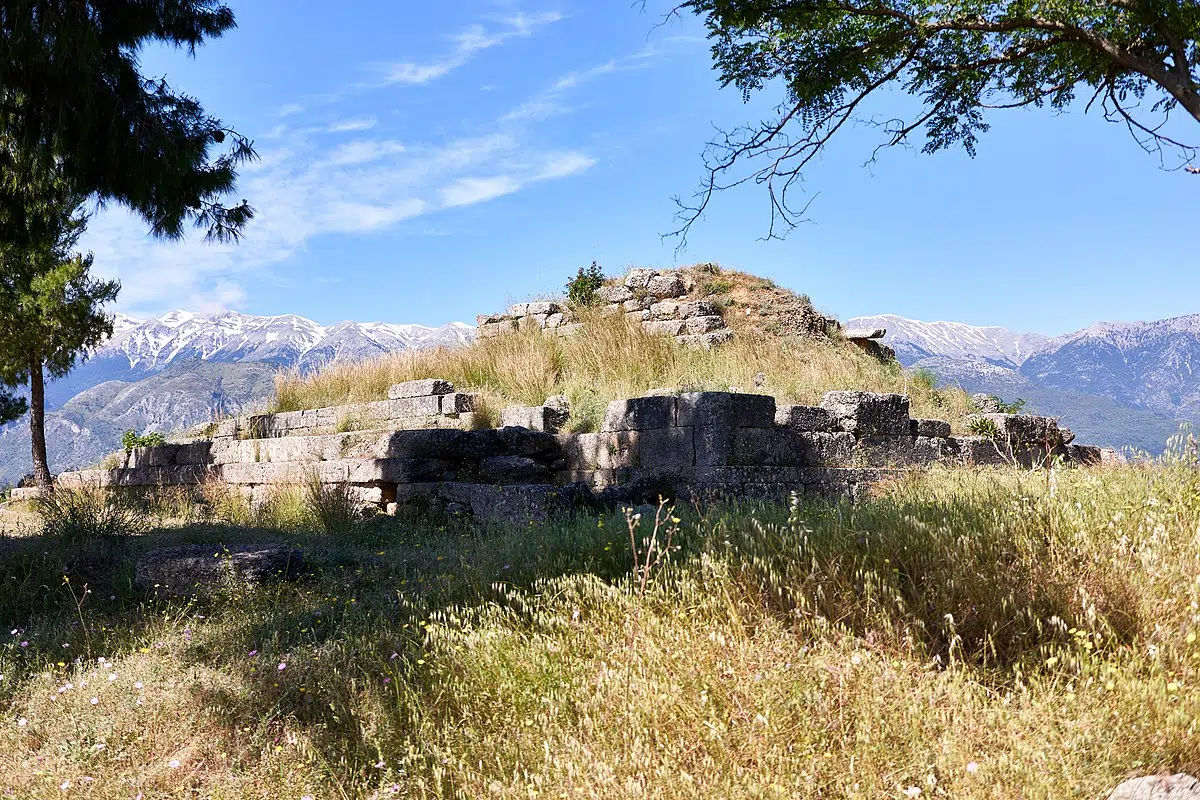
The Spartans were renowned for being exceptionally fierce warriors (as famously depicted in the film 300). As can be expected, growing up as a Spartan was not always easy. Supposedly, according to some sources, the Spartans were so focused on being a strong and formidable nation that they would throw babies off the Kaiadas cliff if they were found to be deformed in any way. But is this really true, or is it just a myth?
The Kaiadas Cavern
Firstly, let’s dispel one aspect of this claim that definitely is a myth. Kaiadas (also spelt ‘Caeadas’) was not a cliff at all, but a cavern in the slopes of Mount Taygetus in Sparta. So, do the ancient sources claim that babies were thrown into this cavern? Well, not quite. The connection between deformed babies and Kaiadas comes from a single ancient source, so we can quote it in its entirety here to see what it actually says:
“Offspring was not reared at the will of the father, but was taken and carried by him to a place called Lesche, where the elders of the tribes officially examined the infant, and if it was well-built and sturdy, they ordered the father to rear it, and assigned it one of the nine thousand lots of land; but if it was ill-born and deformed, they sent it to the so-called Apothetai [Kaiadas], a chasm-like place at the foot of Mount Taÿgetos, in the conviction that the life of that which nature had not well equipped at the very beginning for health and strength, was of no advantage either to itself or the state.” – Plutarch, Life of Lycurgus 16.1, 2.
This passage does not specifically say that the babies were ‘thrown’ into the cavern. They could have been merely placed there. In any case, this is quite unlike the modern image of Spartans literally throwing deformed babies off a cliff.

What the Archaeological Evidence Reveals
Fortunately, Kaiadas itself has actually been found. In 1983, archaeologists conducted an investigation of the cave at the foot of Mount Taygetus which still bears the name ‘Kaiadas’. In this cave, they found countless human bones. This confirms that the Spartans did use Kaiadas as a place to dispose of human bodies. However, did the archaeologists find infant remains?
The answer is no. In fact, almost all of the bones were from men aged 18 to 35 years old. A few female remains were found, but it does not seem that the archaeologists found any infant bones at all. Therefore, there is no archaeological evidence whatsoever that the Spartans discarded deformed babies there.
But should we really dismiss Plutarch on the basis of this complete lack of evidence exactly where we should expect it? Well, Plutarch was not claiming that this was a practice that existed in his own time. He claimed that it was a practice established by Lycurgus, the king and lawmaker of Sparta who probably lived in the eighth century BC.
Because Plutarch was writing many centuries after the fact, there is no reason to give any special weight to his words, especially not when there is a clear absence of archaeological evidence.
The Real Purpose of the Kaiadas Cavern
If the Spartans did not really throw unwanted babies in the Kaiadas Cavern, then what did they use it for? The Greek historian Thucydides gives us the answer. He wrote:
“When they found that he was on the point of expiring, just as he was, in the chamber, they brought him out of the sanctuary, while the breath was still in him, and as soon as he was brought out he died. They were going to throw him into the Kaiadas, where they cast criminals, but finally decided to inter him somewhere near.” – Thucydides 1.134
This reveals the true purpose of Kaiadas. From this contemporary account, we learn that Kaiadas was the place were the Spartans cast criminals. This is perfectly consistent with the archaeological evidence. In fact, archaeologists have even found remains of iron chain rings among the bones. This seems to confirm that at least some of them were chained criminals.
One skull was found with an arrowhead imbedded inside it. This logically means that the person was already dead before their body was thrown into the cavern. This is consistent with Thucydides’ account, which talks about a dead body rather than a live criminal.
Historical Evidence That The Spartans Did Not Throw Babies into Kaiadas
Further confirmation that the Spartans did not throw deformed babies into Kaiadas comes from historical records. For example, there are records about King Agesilaus II, of the fourth century BC, which reveal that he was born blind. He was a Spartan, yet obviously his parents did not discard him. He was even able to become king. This strongly argues against Plutarch’s claim.
Additionally, Xenophon, a Greek historian from the fourth century BC, wrote about the various ways in which Lycurgus strove to make the Spartans a powerful nation. Yet, unlike Plutarch, he did not mention anything about throwing babies off cliffs or into caverns. This, again, is a strong indication that Plutarch’s claim was not true. It was almost certainly invented for propaganda reasons after the time of Xenophon.
See all the latest news from Greece and the world at Greekreporter.com. Contact our newsroom to report an update or send your story, photos and videos. Follow GR on Google News and subscribe here to our daily email!



